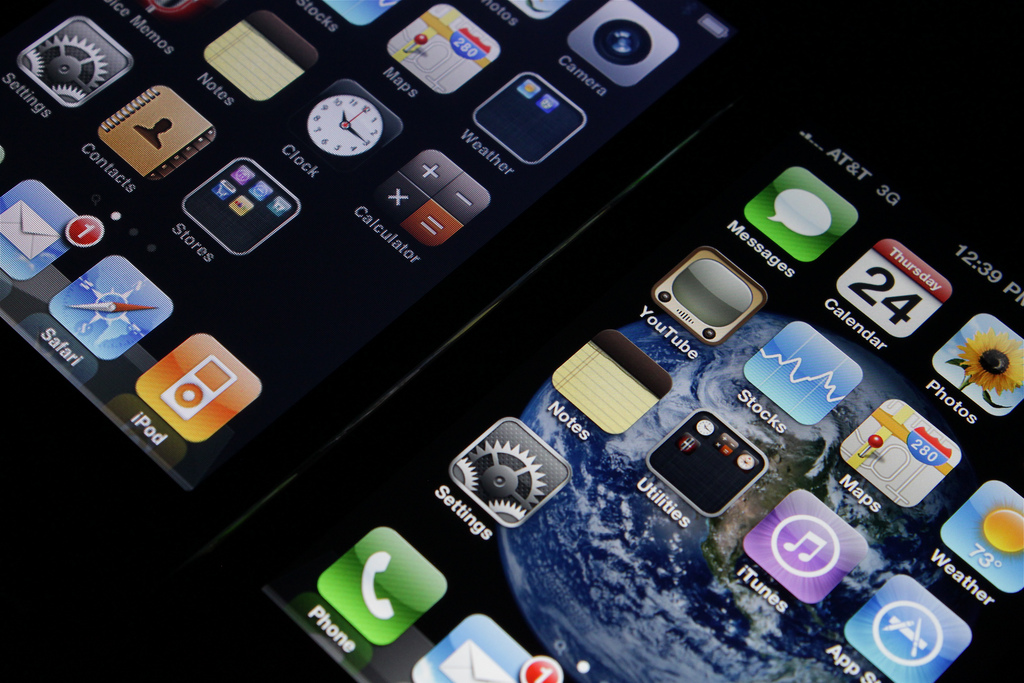The innovative power of Apple cannot be overstated. The iPhone has completely revolutionized communication in the modern age, transforming the ways in which mobile phones were used. The iPhone was one of the first all-purpose devices; the Swiss army knife of phones that allowed you to connect to the internet on the go, take high quality photos, use social media with ease and an ever increasing number of features. Despite its revolutionary debut only six years ago, Apple has continued to improve its finest product to date, each model achieving greater success.
Here’s a look at the evolution of the iPhone and the technological developments made in just six years. Think of what the future may hold for your most loved device!
iPhone 2G
The debut of the most technologically advanced phone in the world was not as huge as you might think. It took a full 74 days for this model to hit $1 million in sales. It’s hard to imagine that the phone that started it all had modest capabilities, with a 2 MP camera, 412 MHZ processor, GSM connection with Edge support for data transfer, WiFi capability, and Bluetooth 2.0. The maximum storage available for this iPhone was just 16 GB! Remember how it looked?
iPhone 3G and 3GS
The introduction of the App Store changed the mobile phone market and developed the iPhone as more than just a mobile phone. You may remember the original iPhone didn’t allow you to download apps and you were limited to the default apps only. However, this generation of the iPhone made over 10,000 apps available for download with just a few easy steps, allowing for greater entertainment, comfort and capability to keep your life easily organized. The iPhone 3G & 3GS was faster than its previous model and the camera was upgraded to a 3.2 MP in the 3GS. The maximum storage capability was also double, leading the way to the iPhone 4.
iPhone 4
The iPhone 4 was Apple’s most successful model so far, selling 1.2 million units in its first weekend. It introduced the retina display which provided crisp and clear imaging. With a larger screen, a 5MP camera, flash and over a hundred new features all packed into a sleek, angular phone 24% thinner than its predecessor, the iPhone 4 was a massive success. Apple also led the way for consumer friendly features, introducing a front facing camera that facilitated selfies; as well as introducing mobile phone video calling, dubbed FaceTime.
iPhone 4S
This model is remembered most for the introduction of Siri, which although widely anticipated didn’t work as well as predicted. However the phone received a major boost in specs that with double the processor, double the speed, double the maximum storage and a substantial improvement in its camera from 5 to 8MP. The iPhone 4S sold a whopping 4 million units in its first weekend, a massive increase previous iPhones.
iPhone 5
Released in 2012, the iPhone 5 sold 5 million units in its first weekend. It was faster, leaner and smarter. The camera allowed users to take photos while simultaneously shooting video, which was a highly anticipated feature. It featured 4G-LTE connectivity which accommodates for speeds that match those found on home internet connections. The screen was bigger, the resolution clearer and the speeds were doubled yet again. Annoyingly, the charger changed to the lightning connector, but at least charging was even easier allowing you to insert and go.
The iPhone 5S
It almost doubled the sales record of its predecessors, selling a massive 9 million units in its first weekend. With touch-ID and a range of attractive colors to choose from, this was the most personalized iPhone. With not many of the specs have changed from the iPhone 5, it’s interesting to see that sales improved so dramatically. The Apple A7 chip attributed to a faster phone, and it was designed to be slightly more affordable and reflect individuality while retaining the Apple identity as sleek and easy to use.


